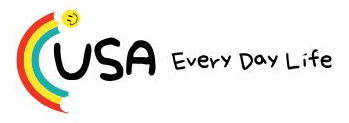Investors looking for a ballast during downturns may want to consider core bonds, despite the recent rockiness in the fixed-income market, according to experts. Last week was one of the most volatile periods on record for the market thanks to the rollout of President Donald Trump ‘s tariff policies and concerns about how these levies and the ongoing trade war with China will impact the economy. Stocks ultimately ended the week higher. Bond yields jumped more than 50 basis points after ending last week around 4%. Bond yields move inversely to prices. Fixed income is meant to be a diversifier and typically helps protect portfolios when stocks tumble. While stocks and bonds generally have a negative correlation — where one price goes up when the other goes down — that is not always the case, as evidenced by last week’s action and in 2022. High-quality bonds may also help investors navigate through a recession. Morningstar’s top-rated core bond funds outperformed the S & P 500 in both the short, Covid-induced recession in 2020 and during the Great Recession that ran from late 2007 through June 2009, said Paul Olmsted, senior manager research analyst, fixed income, at Morningstar. Core bonds are investment-grade securities such as Treasurys, corporate bonds and government agency bonds. “It’s a foundational piece. It’s high-quality income with duration,” Olmsted said. Here are some of the financial services firm’s top-rated intermediate-term core bond funds, which have medalist ratings of gold, silver or bronze. The ratings, which are a forward-looking analysis of investment strategies, indicate that analysts expect the funds to produce positive alpha relative to peers. Positioning in portfolio Olmsted believes core bonds should be a large part of an investor’s fixed-income allocation. For instance, in a typical portfolio of 60% equities and 40% fixed income, about 30% of the latter should be in core bonds, he said. While core bonds may not have been necessary last year when stocks made big gains, they are important to have in case things turn south, said Rick Wedell, chief investment officer at RFG Advisory, who called himself a “big fan” of the assets. “You do own them for what happens if we really start to get scared about what a recession looks like,” Wedell said. “In my mind, there’s not another great asset category that displays that inverse correlation with equities when things get really scary.” He’s also not concerned about the periods of time when stocks and bonds don’t move in opposite directions. “There’s only been about five times in the past 100 years when they haven’t,” Wedell said, adding that it’s “probably a good percentage.” He sticks with actively managed core bond funds for the diversification they bring. They make up about 60% to 80% of his clients’ fixed-income portfolios. He barbells the rest, with short-duration Treasurys or corporate bonds and longer-dated Treasurys. That gives him the ability to move duration by half a year in either direction by moving just 5% of the portfolio on either side, he said. For investors who may feel skittish about the bond market’s recent volatility, they should remember they are earning attractive yields, said certified financial planner Barry Glassman, founder and president of Glassman Wealth Services. “As yields increase, it also increases the annual income cushion that this asset class provides,” he explained. “If we look back four years ago when yields were paltry, not only would an increase in rates cause a larger drop in price, but there was very little annual income cushion to help offset the principal loss.” Glassman will either create a core-bond ladder of varying durations for clients or use an actively-managed fund. What to know about top funds One of the top-rated funds is the Baird Aggregate Bond Fund , which Morningstar analyst Alec Lucas calls a “standout option.” The team aims to add value through positioning on the yield curve, sector allocation and security selection, he said in February . The fund, rated silver by Morningstar, has a 4.01% 30-day SEC yield and 0.55% expense ratio. Its institutional shares earn a gold rating. Meanwhile, the gold-rated Fidelity Investment Grade Bond Fund has a 30-day SEC yield of 4.46% and 0.44% net expense ratio. Morningstar senior analyst Mike Mulach said in May the fund’s strategy is “a reasonable and repeatable approach, supported by the firm’s deep research and a sharp set of proprietary tools.” FBNDX YTD mountain Fidelity Investment Grade Bond Fund The John Hancock Investment Grade Bond Fund, rated bronze, is a bit more expensive with its 0.75% net expense ratio. It has a 3.82% 30-day SEC yield. Its institutional shares earn a silver rating from Morningstar. “The persistent application of a clear, value-driven approach by its seasoned portfolio managers has resulted in strong security selection and relative value sector shift,” Morningstar analyst Saraja Samant said in June . Also in the list is the JPMorgan Core Bond Fund, which has a 30-day SEC yield of 3.81% and net expense ratio of 0.75%. Olmsted said the fund has an “outstanding strategy” that focuses on securitized debt. He gives it a silver rating. “It’s got a history of holding up better in the long run,” he said. Lastly, the bronze-rated TCW Core Fixed Income Fund has a 3.37% 30-day SEC yield and net expense ratio of 0.63%. “Rooted in fundamentals and sensitive to valuations, the team’s style has enabled it to navigate challenging market environments and come out the other side positioned for success,” Morningstar’s Brian Moriarty wrote in November . Get Your Ticket to Pro LIVE Join us at the New York Stock Exchange! Uncertain markets? Gain an edge with CNBC Pro LIVE , an exclusive, inaugural event at the historic New York Stock Exchange. In today’s dynamic financial landscape, access to expert insights is paramount. As a CNBC Pro subscriber, we invite you to join us for our first exclusive, in-person CNBC Pro LIVE event at the iconic NYSE on Thursday, June 12. Join interactive Pro clinics led by our Pros Carter Worth, Dan Niles and Dan Ives, with a special edition of Pro Talks with Tom Lee. You’ll also get the opportunity to network with CNBC experts, talent and other Pro subscribers during an exciting cocktail hour on the legendary trading floor. Tickets are limited!





